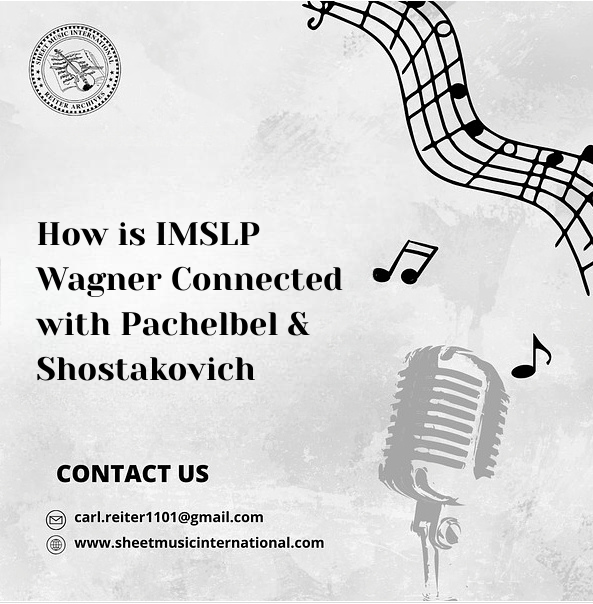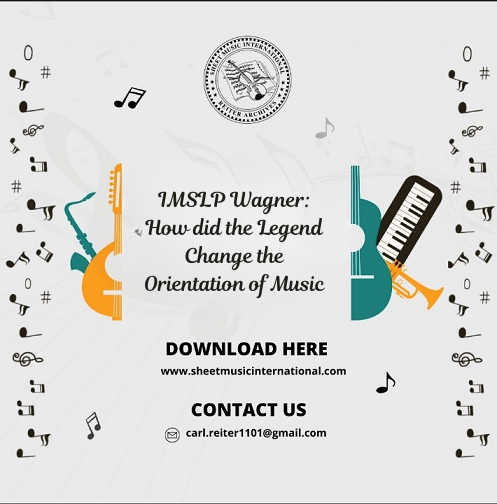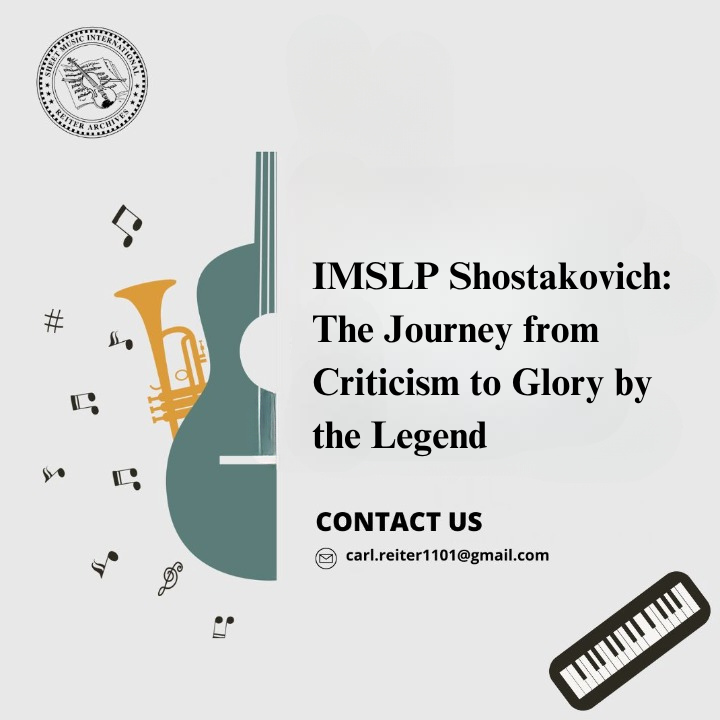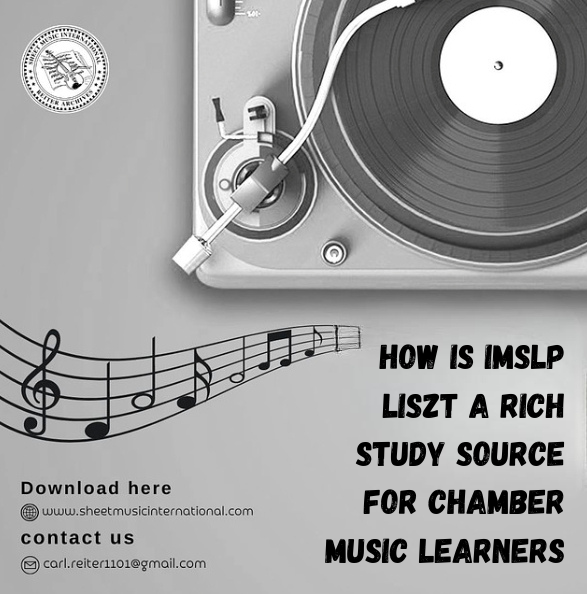
Your Request is under process, Please wait.


Creative work involves a great deal of influence, evolution, and inspiration. That’s the same case with classical music. Come to think of it, whether IMSLP Wagner, Pachelbel, or Shostakovich, every single musical record has its said influence and inspiration.
Creative work involves a great deal of influence, evolution, and inspiration. That’s the same case with classical music. Come to think of it, whether IMSLP Wagner, Pachelbel, or Shostakovich, every single musical record has its said influence and inspiration. This establishes a web of relations among musicians from the contemporary world and those from completely different time zones. A dive into IMSLP Pachelbel, Shostakovich, and Wagner will tell you that no composer stands alone. When you study one, you get a gist of other works going through stylistic development and philosophical contrast.
This idea of reinvention is common among music creatives, and the thread can be easily traced by musical enthusiasts. For instance, the idea of harmonic progression and layered textures in Pachelbel’s Canon in D has been expanded by Wagner in his compositions. Similarly, Wagner’s heavy use of leitmotifs is linked conceptually with Shostakovich's symphonies.
IMSLP Shostakovich, Wagner, and Pachelbel may not be directly connected, but in various creative musical development processes, they are found to be linked. Are you curious to know how? Continue reading to get the answer.
Leitmotifs, complex harmonies, and dramatic intensity have been a part of Wagner's style of performing opera - a unique and charismatic style. Moreover, he concluded classical compositions with emotional depth and philosophical themes with his Tristan and Isolde and The Ring Cycle. As you get a deep dive into IMSLP Wagner, you will explore his vision of “Gesamtkunstwerk” (total work of art). This vision has led him to inspire his peers as well as future music generations. Even in the 20th century, experimentations, as inspired by Wagner, became a major aspect of Shostakovich’s compositions during the Soviet era.
You have certainly heard about Canon in D? Haven't you? The universally popular composition that is used in weddings and has been a part of various academic award-winning films! Its creator, Johann Pachelbel, composed music usually constituting of orderly structure, counterpoint, and tonal clarity. How are those musical works related to Wagner’s? Well, the grand operatic nature of Wagner’s works was far removed from Pachelbel's works. However, both of them counteracted this musical distance with their deep understanding of musical architecture. Although they are not directly linked, IMSLP Pachelbel is said to have influenced Wagner’s compositions.
How? Explore Pachelbel’s bass-driven harmonic progressions, and you will know yourself! If you have got that right, these progressions have become a foundation for establishing a stable Western tonality, so evident in Wagner’s worlds. As you study sacred choral works and organ music in IMSLP Pachelbel, you can easily dissect how the Romantic richness of Wagner’s world was informed by the past.
While studying IMSLP Shostakovich, what struck me the hardest was the lack of artistic freedom for the musicians under Soviet rule. With a bit of concentration and musical knowledge, you can easily decipher the honey-soaked compositions that inwardly were screaming the truth. Composed sarcastically, Shostakovich's works praised the government from the outside while the innermost section of those works was bold, protesting, and filled with ironies. With the artistic urge to provide his audience with an innovative work, he was left in several strife with the government.
While Shostakovich was bound under political pressure, his willingness to compose bold music is linked with Wagner, who had the boon of artistic freedom. Harmony was Wagner’s tool to push the boundaries, and Shostakovich used rhythm and ideology. Like Shostakovich's innovative use of dissent codes in his works, Wagner also used myths to develop his compositions.
The music flows from one generation to another, reinvented, reshaped, and restructured into something innovative. No, not one generation's music influences the other directly, but that indirect link helps the future to evolve. That has been the relationship of Wagner, Pachelbel, and Shostakovich. The contrasts and reinventions have led us to listen to the compositions at present. Pachelbel led the way for Wagner toward a smooth emotional complexity that inspired Shostakovich to compose layered modern music in a deep realm.
Through the IMSLP Wagner, Pachelbel, and more, the students can easily learn the flow of inspiration and influence. All of this gave way to cultural changes and deep societal impacts as far as music is concerned.
IMSLP Wagner, Pachelbel, and other records are great study sources, and when you want to explore connections between the legends, it's the best resource. IMSLP Pachebel in one hand, and another legendary work in the other hand! Are you ready for explorations like these? So, what are you waiting for? Download as many IMSLPs as you want for free from Sheet Music International and start diving deep into legendary musical works!










